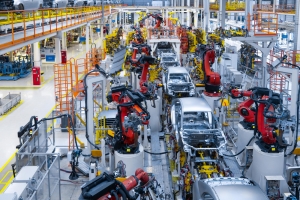Protective Design
US tank crews faced many dangers during World War II while operating armored vehicles. The interiors of tanks could be cramped, and sudden impacts from rough terrain or enemy fire could cause injuries. The US tank helmet ww2 was designed to combat these risks with protection in mind.
The helmet was made from durable fiber, which helped shield soldiers from blows or collisions inside the tank. Its ability to absorb shocks through interior padding was crucial in reducing head injuries. Additionally, the helmet came with a chin strap, ensuring it stayed securely in place even during rapid movements or impacts. This was particularly important in chaotic combat situations, where stability was key to a soldier's safety.
Communication Capabilities
One of the most important aspects of tank operations during WW2 was communication. Tank crews had to work as a team, and effective communication could mean the difference between success and failure in a mission. The WW2 US tank helmet addressed this need by integrating communication features directly into its design.
Built-in headsets allowed tank crews to communicate hands-free, which was essential during the heat of battle. These headsets were connected to radios, enabling seamless interaction between the tank crew and other units. This feature was groundbreaking at the time and greatly improved the efficiency and coordination of tank operations. The ability to communicate, even in the chaos of combat, gave US tank crews a significant advantage.
Comfortable Fit
Comfort may not seem like a priority in a war setting, but when soldiers spent long hours inside a tank, the design of their helmets had to be as comfortable as it was functional. The WW2 US tank helmet was built with this in mind, offering features that made it more comfortable than earlier models.
The helmet featured an adjustable liner, which allowed it to fit snugly on heads of various sizes. This was important because a loose helmet could move around, reducing its protective function. The helmet's lightweight design also helped reduce the strain on soldiers' necks, especially during long tank missions. The breathable fabric in the inner lining also helped prevent overheating, an important consideration for soldiers operating in confined spaces.
Enhanced Field Vision
Visibility is critical for any soldier, and tank operators are no exception. The WW2 US tank helmet was designed with an open-face style, improving the wearer's vision field. This was particularly important for tank commanders and gunners who needed to be aware of their surroundings at all times.
The open-face design allowed for clear vision without compromising safety, and the helmet could also be paired with goggles for additional eye protection. This made it easier for soldiers to see clearly in dusty or smoky environments, ensuring they could stay alert and ready to react in combat situations. The combination of clear vision and protective features set the WW2 US tank helmet apart from other military helmets of the era.
Modularity
One of the key strengths of the WW2 US tank helmet was its modularity. The helmet's liner and padding were removable, allowing soldiers to customize it to fit their needs. This flexibility was important because different soldiers might prefer different fits, and conditions in the field could vary.
If the helmet became damaged or worn, its parts could be easily repaired or replaced. This practical aspect made the helmet more durable over the long term, ensuring that soldiers could continue using it without replacing it completely. The ease of repair and customization gave the WW2 US tank helmet a versatility that many others lacked.
Camouflage Adaptability
In certain combat environments, blending in with the surroundings could be the difference between life and death. The WW2 US tank helmet offered adaptability through camouflage features, allowing soldiers to modify their helmets to suit the terrain.
Soldiers could add camouflage coverings to their helmets to match the environment, whether it was a forest, desert, or urban battlefield. In some cases, helmets were even painted to blend in more effectively. These customization options helped tank crews stay hidden from enemy forces, providing additional protection beyond the helmet's physical strength.
Legacy and Influence on Modern Helmets
The design and features of the WW2 US tank helmet had a lasting impact on military helmet development. It was one of the first helmets to prioritize protection, communication, and comfort. Integrating radios and headsets was a revolutionary step that set the stage for future innovations in military headgear.
Modern helmets used by armored units worldwide still reflect many of the principles established by the WW2 US tank helmet. The emphasis on protection, communication, and modularity continues to be a priority, and the legacy of this iconic helmet can be seen in today's military gear. Its influence extends beyond World War II, shaping how military helmets are designed and used in modern warfare.
Conclusion
The WW2 US tank helmet stood out for its protective design, communication capabilities, and comfort. It addressed the specific needs of tank crews operating in challenging environments, offering them safety and efficiency. Its modular design and camouflage adaptability added to its versatility, while its legacy continues to influence modern military helmets. Overall, the WW2 US tank helmet was an essential piece of equipment that played a crucial role in the success of US tank operations during the war.
If you want to learn more visit the livepositively website.





